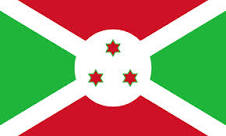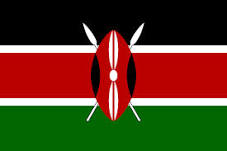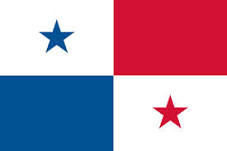Bolivia
South America
Elevation: the yungas valley grows coffee as low as 2,500 feet, but most specifically coffee from Bolivia is grown between 4,000 and 7,000 feet.
Species: Arabica
South America’s poorest nation, Bolivia is a small-time producer compared to some of the countries around it. While it was formerly known for lower-end coffees, its quality has been on the upswing in the last decade. that is partially thanks to the arrival of the Cup of Excellence, which launched in Bolivia in 2004. Also important in the transition is development organization USAID, which has helped fund efforts to improve coffee quality. Bolivian coffees have been described as nutty, with smooth body and mild acidity.
Notable region: Caranavi, located in western Bolivia, is known as the country’s “coffee capital.”
Brazil
South America
Elevation: 2,000 to 4,000 feet
Species: Arabica and Robusta
The behemoth of the coffee world, Brazil accounts for somewhere between a third and 40 percent of the world’s coffee. Not all of Brazil’s coffee is specialty-caliber; about 20 percent of what it grows is Robusta, and some of its Arabica coffees are machine-picked and used for the commercial market. Brazil does produce high-quality coffees, and U.S. roasters commonly use Brazillians in their espresso blends to provide body, nuttiness and more. Some regions in Brazil also produce coffees with higher furan levels, which are essential to crema in espresso. In addition to its prolific production, Brazil also boasts a robust coffee-drinking culture; its roasting association, ABIC, predicted it could pass the U.S. in coffee consumption by 2014.
Notable region: The fourth-largest of Brazil’s 26 states, Minas Gerais - located in the southeast of the country - produces about half of the nation’s coffee.
Burundi
Africa
Elevation: 4,000 to 6,500 feet
Species: Arabica
Burundi has the capability to produce top-notch coffee, but it has long been in the shadows of better-known African coffee producers like its neighbor Rwanda. This was largely because of civil strife and outdated selling practices that led to subpar beans. In 2005, the government started selling its interest in washing stations and the Burundi coffee industry moved toward privatization, empowering growers and opening channels with the international marketplace. In 2006, USAID launched the Burundi Agribusiness Program to increase the competitiveness of Burundi coffee, mostly through coffee-quality improvements. Coffee now accounts for about 80 percent of Burundi’s export revenues. The country’s coffee can be described as bright, sweet and fruity.
Notable regions: Heirloom bourbon varieties account for a good deal of Burundi’s coffee trees - including many of those in the city of Kayanza, located in the north of the country.
Colombia
South America
Elevation: 4,000 to 6,000 feet
Species: Arabica
Colombia’s coffee-production is defined by smallholders: The Colombian Coffee Growers Federation says that among the 563,000 Colombian coffee-growing families, 96 percent are rural families with less than five hectares (about 12 acres) of coffee plantations. One of the world’s top-three producers of Arabica coffee, Colombia is also one of the best-known origin countries because of Juan Valdez, the mustachioed, sombrero-wearing mascot who has represented Colombian coffee since 1958. The country suffered bad weather in 2012 that led to reduced production, but things are looking up: The Wall Street Journal reported last month that Colombia’s coffee output for June 2013 was 28 percent from a year earlier.
Notable regions: Huila, located in the southwest of the country, produces coffees known for their floral flavor, great acidity and outstanding balance.
Costa Rica
North America
Elevation: 3,900 to 6,500 feet
Species: Arabica
Costa Rica has a reputation for wet-processed coffees that are bright and clean. It boasts about 32,000 coffee farms, with half of those less than one hectare (roughly two and a half acres) in size. Like many Central American countries, Costa Rica is currently battling coffee rust. Costa Rica declared a national emergency to fight rust in January, and its National Coffee Institute estimated the disease will destroy about 12 percent of the country’s planted coffee in the 2013-14 harvest.
Notable regions: Tarrazu, with its high altitude and nutrient-rich soil, is known for producing some of the Costa Rica’s best-quality coffee.
El Salvador
North America
Elevation: 1,500 to 6,000 feet
Species: Arabica
A little more than 400,000 acres grow coffee in El Salvador - about 12 percent of the country’s arable land. El Salvador coffees are known for full body, and about 80 percent of its coffee is the bourbon variety. El Salvador also is dealing with coffee rust: According to the International Coffee Organization, El Salvador has the highest incidence rate of any Central American country, with rust affecting more than 74 percent of its coffee-growing areas.
Notable regions: One of the highest-volume areas is Santa Ana, the country’s second-largest city, located in northwest El Salvador. Santa Ana accounts for about a third of the country’s coffee production.
Ethiopia
Africa
Elevation: 5,000 to 6,900 feet
Species: Arabica
Ethiopia is known as the birthplace of coffee: indigenous coffee trees were said to have originated in Abyssinia, now known as Ethiopia. Coffee is Ethiopia’s largest export, accounting for about 60 percent of its total export earnings. Ethiopia’s best-known coffee-growing regions are Harar, Sidamo and Yirgacheffe, all of which have been trademarked by the Ethiopian government. Ethiopian coffees are known for sweetness and often intense fruitiness.
Notable regions: Yirgacheffe, located in southern Ethiopia, produces some of the world’s best coffees, which are typically washed and sun-dried.
Guatemala
North America
Elevation: 4,000 to 6,000 feet
Species: Arabica
Guatemala’s coffee-growing regions have varied climate conditions that make for several distinct offerings within the country. Its coffees are known to be floral, bright and clean. Guatemala is also one of the most public victims of coffee rust: In January it declared a state of national emergency, and its coffee association, Anacafe, says 70 percent of Guatemala’s coffee crop is affected.
Notable regions: The volcano-abundant Antigua is known for high-quality coffees, in part due to its optimal soil and clearly defined seasons. Main varieties grown are bourbon, caturra and catuai.
Honduras
North America
Elevation: 3,900 to 6,000 feet
Species: Arabica
Honduras produces the most coffee in Central America. Its natural conditions, from soil to elevation to temperatures, make it ideal for growing high-quality coffee, but it has traditionally been known for commercial beans. However, improvements are being made, including quality-minded modifications to its processing methods, and Honduras’ specialty coffees are being highlighted through programs like Cup of Excellence. Its coffees are known for being full-bodied and sweet. Like its Central American neighbors, Honduras is also battling coffee rust.
Notable regions: Coffees from Santa Barbara - a region in the country’s northwest - dominated the winners list at this year’s Cup of Excellence, accounting for more than half of the 22 awarded coffees.
India
Asia
Elevation: Robusta grows at lower altitudes of 1,600 to 3,300 feet, while Arabica grows between 3,300 to 6,000 feet.
Species: Arabica and Robusta
The world’s sixth-largest producer, with robusta accounting for much of its output. Italy is the largest importer of Indian coffees - buying about a quarter of its output - and mostly uses it in espresso blends. The majority of Indian coffees are grown in the southern states of Karnataka, Kerala and Tamil Nadu. India is helping to lead the charge of good-quality robusta, producing the first coffee certified by the Coffee Quality Institute’s R Coffee System, the robusta-specific cousin to CQI’s Q Coffee System.
Notable regions: Karnataka, in Southwest India, accounts for more than half of India’s coffee.
Indonesia
Asia
Elevation: 2,500 to 5,000 feet.
Species: Arabica and Robusta
One of the world’s largest coffee producers, though about three-quarters of its production is of the robusta species. Indonesia’s coffees are known for low acidity and strong body, which makes them - like Brazilian coffees - a popular base for espresso blends. Most Indonesian coffee is processed with a unique method called Giling Basah that incorporates hulling: The coffee is pulped via a hand-cranked machine, fermented overnight and then the mucilage is washed off.
Notable regions: Sumatra - an island in western Indonesia - produces some of the country’s best coffee. Its producer landscape consists of many smallholders with tiny plots of land.
Kenya
Africa
Elevation: 2,000 to 6,000 feet
specie: Arabica
Kenya is a coffee giant in Africa, with a reputation for high-quality beans. The bulk of coffee cultivated during the country’s two annual harvests is bourbon cultivar, characterized by a sweet tone and winy acidity, with hints of chocolate and notes of citrus. Most of Kenya’s coffee comes from small (half-acre) farms and is sold through the country’s transparent auction system, in place since the 1930s, which ensures that the highest-quality beans carry the highest price.
Notable regions: Excellent bourbon is grown at high elevations on the side of Mount Kenya, Africa’s second-tallest mountain after Mount Kilimanjaro
Mexico
North America
Elevation: 1,600 to 5,200 feet
Species: arabica
Mexico is the third-largest producer of Arabica, with coffee as the country’s number-one agricultural export. Mexico is also one of the top producers of organic coffees and home to a number of fair-trade cooperatives and initiatives intent on improving the quality of life for growers, as well as the quality of local coffees.
Notable regions: Both Chiapas and Oaxaca are home to some Mexico’s finest shade-grown coffee, harvested under indigenous trees in human-modified “coffee forests” that offer sanctuary of wildlife, keep coffee hydrated and fertilized, and minimize soil erosion.
Nicaragua
North America
Elevation: 1,600 to 4,000 feet
Species: Arabica
Coffee is Nicaragua’s principal export, and 95 percent of the country’s cultivation is “shade-grown,” often under dense native canopy in rich, volcanic soil in the country’s central northern highlands. A humid climate and plentiful rainfall contribute to the quality of coffee harvested in historic growing regions such as Jinotega and Matagalpa.
Notable regions: Lush, sub-tropic Jinotega in the Cordillera Isabelia mountain range produces the bulk of Nicaragua’s coffee exports.
Panama
North America
Elevation: 3,000 to 6,000 feet
Species: Arabica and robusta
Panama is known for its production of the rare, sought-after gesha variety, which originated in Ethiopia and was introduced to Panama in the 1960s. Made famous by the Hacienda La Esmeralda estate in Boquete, isolated gesha beans continue to win awards and set coffee auction records. Praised by enthusiasts and is known for its distinct flavor, which is often compared to an Ethiopian Yirgacheffe.
Notable regions: In the highlands near dormant volcano Volcán Barú, Panama’s tallest mountain at 11,000 feet, coffee thrives at elevations of up to 6,000 feet due to the region’s volcanic soil and perpetual mists.
Papua New Guinea
Australia
Elevation: above 5,000 feet
Species: Arabica and robusta
Because coffee is easy to grow here (the soil is nutrient-rich and the weather is ideal), Papua New Guinea’s coffee exports are almost all sourced from smallholder farms, or coffee “gardens,” sometimes home to fewer than 100 plants. On the one hand, a lack of larger plantations and estates ensures that little to no pesticides touch the country’s harvests. On the other, without the necessary infrastructure or financial incentive, quality assurance remains a struggle for small-scale growers, making premium, wet-processed Papua New Guinea Arabica - a sought-after cup for many - somewhat difficult to obtain.
Notable regions: A cool climate and bountiful rainfall make the Eastern Highlands’ Wahgi Valley an ideal environment for Arabica.
Peru
South America
Elevation: 4,000 to 7,000 feet
Species: Arabica
Peru is a country of vastly different terrains, but much of its coffee is grown high in the Andes, where mild temperatures and less oxygen allow beans to ripen slowly, creating dense flavor and complexity. Ahead of the curve when it comes to sustainability, Peru is one of the world’s top exporters of organic coffee, while traditional cultivation techniques such as micro-wet-milling protect national resources, and a steady increase in cooperatives boosts fair-trade practices, improving the lives of many of the country’s smallholder farmers.
Notable regions: The centrally located mountain valley of Chanchamayo is noted for its bright, earthy, high-altitude coffees.
Rwanda
Africa
Elevation: 5,000 to 7,200 feet
Species: Arabica
known as “the land of a thousand hills,” Rwanda offers an ideal landscape for growing high-quality Arabica. Unfortunately, the industry has had a rough history. Coffee quality declined drastically in the 1930s due to government-mandated production, and an already weak industry crumbled in the wake of Rwandan genocide and civil war. Almost two decades later, Rwanda is still recovering from the horrors of the mid-’90s, but international aid programs are fueling new growth and development. USAID’s PEARL and SPREAD programs put coffee front and center by creating jobs for new farmers, offering agronomy education to Rwandan students and facilitating growers’ access to new markets, all helping to improve the standard of living for tens of thousands of Rwandans. The industry is booming, and international coffee buyers are hungry for the country’s characteristic well-balanced, medium-bodied beans.
Notable regions: Rwanda’s western Lake Kivu region is lauded for its complex, chocolaty coffees with floral Jasmine notes.
Tanzania
Africa
Elevation: 2,500 to 8,000 feet
Species: Arabica and robusta
Tanzania is home to a variety of flavor profiles, due to the country’s vast strata of high- and low-elevation farms. Coffee has been a cash crop here for more than 100 years, and while Arabica make up most of Tanzania’s exports, robusta beans thrive in low-lying areas. Tanzanian coffees are similar to Kenyan coffees: bold in flavor with bright acidity. Many associate premium peaberry coffee - smaller, single-fruit beans thought to have an enhanced flavor and sweetness - with Tanzania, though it may be the rarity of these oval-shaped beans that lends them their increased desirability and price.
Notable regions: Most of Tanzania’s coffee is grown near the Kenyan border, on the slopes of Mount Kilimanjaro.
Vietnam
Asia
Elevation: 1,600 to 5,200
Species: Arabica and robusta
While Vietnam ranks second in the world in terms of volume exported, most of what is cultivated in this tropical Southeast Asian country is high-yield robusta, and the Arabica that does exist is almost all catimor variety, a robusta hybrid of lower-than-average quality.
Notable regions: In the southern part of the central highlands, near Dalat, an average elevation of around 4,900 feet, temperature weather and a close proximity to major ports signifies powerful potential for the cultivation of higher-quality Arabica.





















